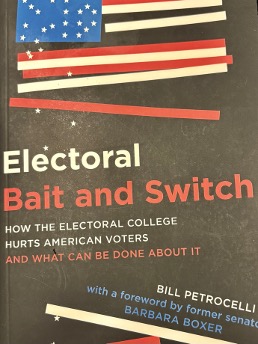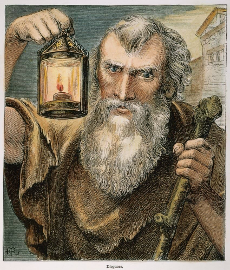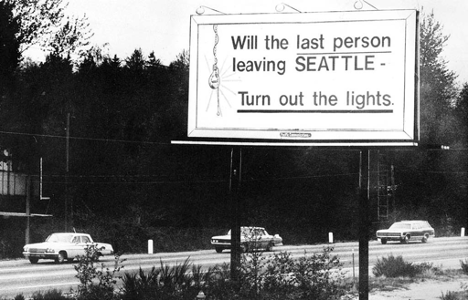In fourteen days America will have a new (or old) president, and it is not hyperbolic to say that democracy is at stake. My Inbox is full of doomsday scenarios, pleas for money and hysterical exhortations to get out the vote. Oracles and Cassandras abound. Democrats are raking in millions but need even more to fight off huge money dumps from Trump’s billionaire coven – Elon Musk, Miriam Adelson, Timothy Mellon, the Uihlein’s and Peter Thiel.
It’s the train wreck you see coming but have no power to prevent or ignore. Will they or won’t they? How did we get here? Is our system of government so broken it can’t be reengineered? It feels like it, but maybe it’s always been that way. For 240 years Americans told themselves that the great democratic experiment was working. And it was—but imperfectly. Three equal branches. Checks and balances. Free and fair elections. “One man, one vote.” And, the peaceful transfer of power every four years. Most of these things were philosophical constructs, stories we told ourselves for more than two centuries. The truth is darker.
For 93 of those 240 years only white men were allowed to vote. It took another 51 years for women to get the franchise, and though the Fifteenth Amendment guaranteed all men the right to vote, the victory was pyrrhic since Jim Crow laws kept the majority of African Americans without a vote for 94 more years and enactment of the Voting Rights Act of 1965. Not exactly “a more perfect union.”
Four US presidents have been assassinated. Americans killed six-hundred-twenty thousand of their own in the Civil War, and gun-related deaths in the US (murder or suicide) have risen annually from 20,000 in 1968 to 49,000 in 2021.
I was a believer and considered myself a long term optimist even when things looked threatening in the short term. I saw the “glass half full” until 2016. Today my glass is almost empty. It isn’t that I don’t see the potential for renewal. It’s that the system is failing those of us who still believe in the republic, and the tools that could repair it are hopelessly locked up. Our government is divided, gridlocked and ossified.
***
Even our most cherished institutions have been corrupted. The Supreme Court has been politicized. Justices Thomas and Alito no longer even pay lip service to the institution’s history, promise of impartial constitutional analysis and adherence to stare decisis. They vote according to their grievance based far-right political preferences and are shameless as they do.
***
Similarly, the co-equal legislative branch, Senate and House of Representatives is also broken, polarized, and ineffective. On January 6, 2020, without evidence of fraud or other inappropriate activity, 147 Republican members of the House of Representatives refused to certify the presidential results and the legitimacy of President Biden’s claim to the office. In effect they voted to overturn the results in favor of Donald Trump. To this day the loser refuses to acknowledge the legitimacy of his loss.
***
Here are the three things that trouble me most about America and the upcoming election:
- Democrats have argued that democracy is at stake, and I agree. But it’s an argument that feels hollow. If this is a democracy governed by and committed to the “rule of law” then how is it possible for a convicted felon who remains under Federal indictment for sedition, is a pathological liar, and was found to be a sexual predator by a jury of his peers even be allowed on the ballot? The Supreme Court and Congress are bending over backward to be “fair” to him. What about being fair to the American electorate? The system is broken and the only way to begin the needed repair is to deny him the power he craves. VOTE!!!

2. But democracy is not only at stake in America. Autocracy is gaining strength around the world. I may not be able to change that elsewhere, but I may be able to exert pressure here. One of the most egregious examples of autocracy in action is what’s happening in Israel where the US is complicit in Netanyahu’s genocidal fatwa on the Palestinian people of Gaza, the West Bank, and Lebanon. Yes, the Hamas attack on October 7, 2023 was heinous, but obliterating Gaza and killing more than 41,000 Palestinians in pursuit of a handful of Hamas leaders is equally uncivilized. President Biden has tried for months to exert pressure on Netanyahu and been brushed off like an irritating insect. Netanyahu’s determination to extinguish “Hamas” looks more and more like a “final solution” corruption of everything Israel stood for under Ben-Gurion, Golda Meir, Yitzhak Rabin, Menachem Begin, and Shimon Peres. and that America is complicit by continuing to provide weapons and money supporting the war. Like Trump Netanyahu is under indictment and struggling to stay in power by pandering to the hard right. America should take an effective stand in favor of a democratic Israel. New leadership can effectuate that change.

3. And finally I, like the majority of Americans, do not understand how or why seven “swing” states can be allowed to elect the president of the United States, the most powerful elected official in the world. James Madison, the primary architect of the Constitution, feared that if a majority of voters could determine the winner it might also disenfranchise a minority. But, times have changed and gerrymandering has skewed the “one man, one vote” principle and made the archaic Electoral College a dangerous anachronism. Minorities need to be protected but the current system allows for tyranny by a minority. I highly recommend Bill Petrocelli’s Electoral Bait and Switch, a review of the Electoral College with suggestions for improvement (available on Amazon).

It’s time to seal the cracks and refill our glasses. Don’t be silent. I urge you to vote.











































